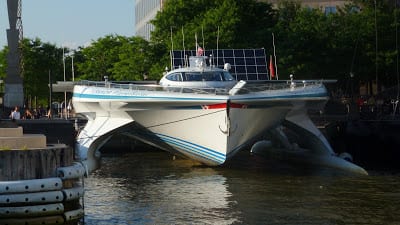Highly radioactive snow with counts of up to 65 CPM was measured with Geiger Counter in January of 2013. This snow fell in an area that is 25 km away from Fukushima Daichi. Minamisōma is a city located in Fukushima Prefecture, Japan.
As of May, 1, 2011, the city had an estimated population of 68,745 and a population density of 60 persons per km². The total area is 398.50 km². The Japanese government says this area is 'safe' to live in. As of 2012., residents are being invited to 'return' to this 'safe' area. Minamisōma is about 25 kilometres (16 miles) north of Fukushima I Nuclear Power Plant, the site of the nuclear accident that followed the 2011 Tōhoku earthquake and tsunami.
Geiger counter (at Wiki page, not in video above) showing radiation at Minamisoma: 0.532 μSv/h. This equates to an annual radiation dose of 4.66 millisieverts, compared to the government's criteria for 'safe' return residents at 20 millisieverts per year.
Geiger counter (at Wiki page, not in video above) showing radiation at Minamisoma: 0.532 μSv/h. This equates to an annual radiation dose of 4.66 millisieverts, compared to the government's criteria for 'safe' return residents at 20 millisieverts per year.
The pre Fukushima background radiation was a maximum of 1 millisievert exposure per year, which used to be the safe maximum limit for citizens prior to Fukushima Daichi.
In the video above, we are detecting 'fresh' radiation in the snow in Japan. Could there be a pattern here?
On Dec. 6th, 2013, we did a swipe test of rain droplets on a mailbox in Northern California, at around 8 PM. Using a pancake style Geiger Counter from Aware Electronics; Model RM-80 with a plastic layer on top of it (which blocks all alpha radiation, this wet paper towel had a high radiation reading of 291 uR/Hr.. average of 265. The pancake Geiger detector is hooked into a computer which provides the graphs below.
The normal background radiation registered between 9-37 uR/Hr, as shown in first six graphed points below.
The next test was putting a thick newspaper between the pancake detector and the wet paper towel. This reduced the radiation readings by a considerable amount, to 53 uR/Hr, approximately twice background radiation.

The third test, was putting a thick book between the wet paper towel and the detector. All of the radiation was blocked by a paperback book and the detector went back to normal background radiation levels, in the 20-30's.
Then we took the same wet paper towel sample and put it back on the plastic bag on top of the detector and the reading went right back up to 260-290.
So what can we learn from this radiation test of the rain in California, done in 2013? (We recommend all you radiation testers out there do it this same way, to isolate the TYPE of radiation that you are detecting without the expensive equipment that someone like Antiproton has.)
On Dec. 6th, 2013, we did a swipe test of rain droplets on a mailbox in Northern California, at around 8 PM. Using a pancake style Geiger Counter from Aware Electronics; Model RM-80 with a plastic layer on top of it (which blocks all alpha radiation, this wet paper towel had a high radiation reading of 291 uR/Hr.. average of 265. The pancake Geiger detector is hooked into a computer which provides the graphs below.
The normal background radiation registered between 9-37 uR/Hr, as shown in first six graphed points below.
The next test was putting a thick newspaper between the pancake detector and the wet paper towel. This reduced the radiation readings by a considerable amount, to 53 uR/Hr, approximately twice background radiation.
The third test, was putting a thick book between the wet paper towel and the detector. All of the radiation was blocked by a paperback book and the detector went back to normal background radiation levels, in the 20-30's.
Then we took the same wet paper towel sample and put it back on the plastic bag on top of the detector and the reading went right back up to 260-290.
So what can we learn from this radiation test of the rain in California, done in 2013? (We recommend all you radiation testers out there do it this same way, to isolate the TYPE of radiation that you are detecting without the expensive equipment that someone like Antiproton has.)




![Russian soldiers next to a model of a Russian Topol missile during a training session at the Serpukhov's military missile forces research institute some 100km outside Moscow. [AFP]](http://www.rawstory.com/rs/wp-content/uploads/2013/10/Russian-soldiers-next-to-a-model-of-a-Russian-Topol-missile-during-a-training-session-at-the-Serpukhovs-military-missile-forces-research-institute-some-100km-outside-Moscow.-AFP.jpg)


 Today, in the United States, we have 104 operating nuclear plants producing electricity. The owners, operators, and government regulators who oversee them say an event like Fukushima will not happen here. And even if it did, they insist, there is enough liability insurance in place to cover the damages. The actual amount of that insurance coverage: just $12.6 billion.
Today, in the United States, we have 104 operating nuclear plants producing electricity. The owners, operators, and government regulators who oversee them say an event like Fukushima will not happen here. And even if it did, they insist, there is enough liability insurance in place to cover the damages. The actual amount of that insurance coverage: just $12.6 billion.


